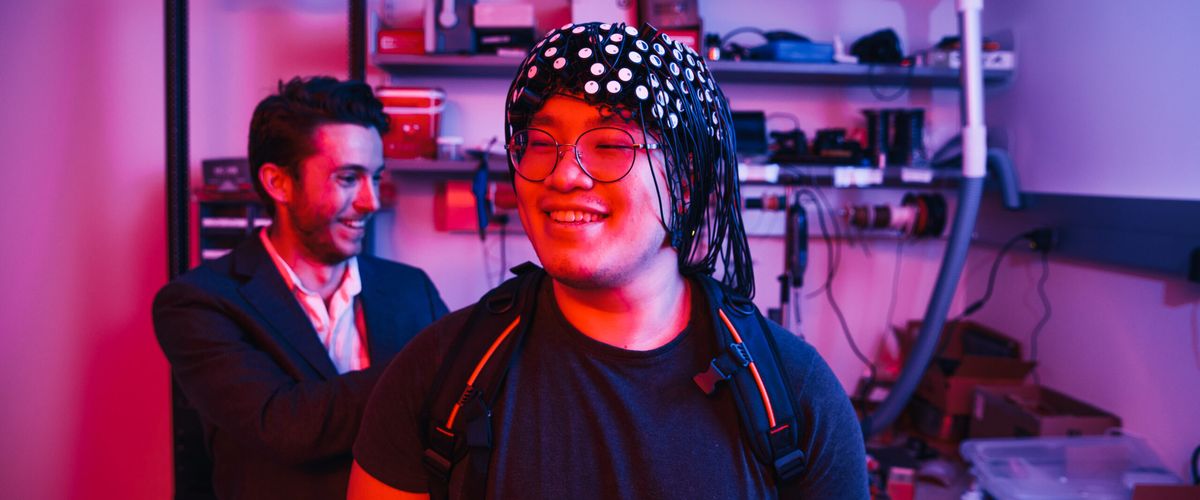Engineered for Impact
By Mike Seele
What will it take to create functional tissue patches to repair the damage from a heart attack? Or create clean, sustainable and practical energy? Or understand, and potentially treat, neurodegenerative disorders?
These are among today’s most pressing societal challenges. Solutions to each will require expertise in several fields, and the traditional approach—where experts in different fields make incremental advances independent of each other—will take a long time and may not craft the best solutions.
What if you could bring those experts together and ask each to look at the problem from their individual perspectives, discuss it with each other, and approach it as a group in a more holistic way? More robust solutions could be found faster.
This is the concept of convergence, and it is at the core of the Boston University College of Engineering’s new approach to research and education, an approach unique among engineering schools.
Other engineering schools have as many as 14 siloed departments, where collaboration with colleagues in other departments is difficult. At BU, collaboration has been the norm for years, supported by a leaner structure that includes just three traditional academic departments, plus two divisions focused on graduate education. A culture of collaboration—both among engineers and with researchers in medicine, business and the sciences—created a foundation supporting three pillars built to create a new kind of engineer.
Several years ago, the college built the first pillar: Creating the Societal Engineer, who is committed to using the unique skills of the engineer to improve society and the human condition. Among other attributes, the Societal Engineer is trained to work and communicate in teams with people from all backgrounds, and will now also have the capacity to abstract across disciplines to develop more creative, robust and impactful approaches to societal challenges (see p. 8).
The second pillar focuses on six research themes where the college already had significant strength and where a convergent, collaborative approach is likely to be especially fruitful. These themes are:
Intelligent, Autonomous & Secure Systems
Neuroscience & Neuroengineering
Synthetic Biology, Tissue Engineering & Mechanobiology
Each researcher in a diverse mix brings a unique perspective and way of thinking to the problem, allowing creative solutions to bubble up. The college is recruiting faculty aligned with these themes and this way of thinking (see p. 12),and has established a structure to support them. The College is also offering fellowships to PhD candidates who have the skills and desire to work on convergent research projects (see p. 8).
Education and research will not be conducted in a vacuum. The third pillar is outreach to, and involvement with, industry. Opportunities for joint research that produces marketable innovations will be pursued. Additionally, industry partners inform the curriculum in three interdisciplinary teaching facilities (see p. 10).
All three pillars support a new kind of engineering school, one that offers a path to quicker, better solutions to society’s major challenges, one that produces a new kind of collaborative and creative engineer, one that is engineered for impact.
Learn more about the College of Engineering:
- Creating the societal engineer
- Building the workforce of tomorrow
- Building a new kind of faculty
- Building a collaborative culture
